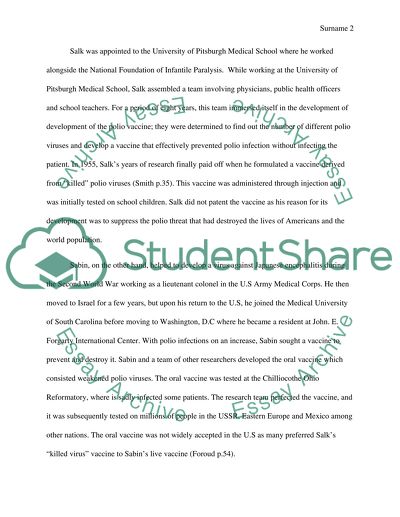Cite this document
(“Essay on Jonas Salk and Albert Sabin in Their Search for a Vaccine for”, n.d.)
Retrieved from https://studentshare.org/health-sciences-medicine/1434071-compare-and-contrast-essay-on-jonas-salk-and
Retrieved from https://studentshare.org/health-sciences-medicine/1434071-compare-and-contrast-essay-on-jonas-salk-and
(Essay on Jonas Salk and Albert Sabin in Their Search for a Vaccine for)
https://studentshare.org/health-sciences-medicine/1434071-compare-and-contrast-essay-on-jonas-salk-and.
https://studentshare.org/health-sciences-medicine/1434071-compare-and-contrast-essay-on-jonas-salk-and.
“Essay on Jonas Salk and Albert Sabin in Their Search for a Vaccine for”, n.d. https://studentshare.org/health-sciences-medicine/1434071-compare-and-contrast-essay-on-jonas-salk-and.


